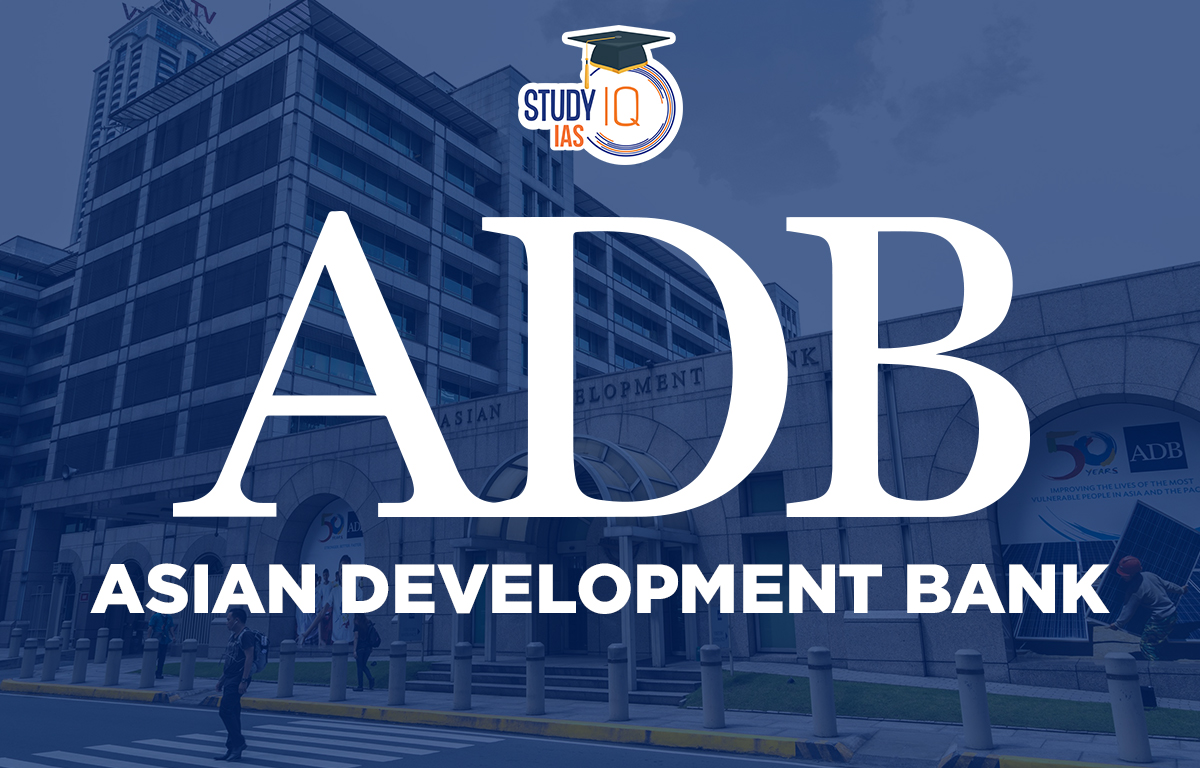Table of Contents
Asian Development Bank
The Asian Development Bank (ADB) is a regional development bank founded in 1966 to promote Asian and Pacific economic and social development. The bank is headquartered in Manila, Philippines, and operates over 30 branches throughout the region. The Asian Development Bank supports its member countries’ economic development efforts by providing loans, grants, and technical assistance. It focuses on infrastructure development, education, health, governance, and environmental sustainability, among other things.
In addition, the bank promotes regional cooperation and integration among its member countries. The Asian Development Bank has 68 member countries as of 2023, with 49 from the Asia-Pacific region and 19 from outside the region. The Asian Development Bank is owned by its member countries, with Japan and the United States being the largest shareholders.
India is one of ADB’s founding members. In recent years, the ADB has prioritised private sector development, gender equality, and climate change mitigation and adaptation. In response to the COVID-19 pandemic, the bank has also committed to increasing its lending for social protection and health projects.
This article will provide relevant ADB and India developments for the UPSC Syllabus.
Asian Development Bank Headquarters
The Asian Development Bank is headquartered in Manila, Philippines (ADB). The ADB headquarters house the bank’s executive offices as well as various departments and divisions responsible for managing the bank’s operations, programmes, and projects throughout Asia-Pacific.
Asian Development Bank Establishment
The Asian Development Bank (ADB) was founded in 1966 when 31 member countries signed the ADB Charter. The bank was established to promote economic and social development in the Asia-Pacific region, with an emphasis on poverty alleviation.
The ADB was founded in the early 1960s by a group of economists and policymakers who recognised the need for a regional development bank to support the economic growth of Asian and Pacific countries. The establishment of the ADB was also seen as a way to counterbalance the influence of other international financial institutions dominated by Western countries, such as the World Bank and the International Monetary Fund.
Asian Development Bank President
President Masatsugu Asakawa was elected by the ADB Board of Governors and took office on January 17, 2020. In his opening remarks on March 8, 2023, President Masatsugu Asakawa emphasised that digital technology is an excellent enabler of gender equality and that empowered women are leaders and change agents.
Mr Asakawa was a Special Advisor to Japan’s Prime Minister and Minister of Finance prior to his appointment as President, and he has extensive experience in international finance and development, including serving as Japan’s Vice Minister of Finance for International Affairs. Mr Asakawa is responsible for leading the ADB’s strategic direction and overseeing its operations in promoting economic and social development in Asia and the Pacific region as President.
Asian Development Bank and India
India and the Asian Development Bank (ADB) have had a long-standing relationship since India became a founding member of the ADB in 1966. The ADB has provided significant financial and technical assistance to India’s development efforts in a variety of sectors over the years.
The following are some of the key areas of cooperation between India and the ADB:
- Infrastructure development: The ADB has funded several infrastructure projects in India, including highway, railway, and port construction, as well as urban infrastructure and renewable energy projects.
- Agriculture and Rural Development: Through various programmes and projects, the ADB has helped India improve agricultural productivity and rural development.
- Education and Skill Development: The ADB has funded a number of education and skill development initiatives in India, including vocational training and higher education initiatives.
- Water Supply and Sanitation: The ADB has helped India improve access to safe drinking water and sanitation facilities, especially in rural areas.
In recent years, the ADB has stepped up its engagement with India, approving several large loans to aid the country’s development efforts. The Asian Development Bank approved $3.9 billion in loans to India in 2020, including funding for infrastructure projects, social sector initiatives, and COVID-19 response efforts.
Over the years, the ADB-India partnership has been critical in assisting India’s economic growth and development.
Asian Development Bank UPSC
The Asian Development Bank (ADB) is a key player in promoting regional cooperation and integration in Asia and the Pacific. It has supported numerous infrastructure projects in the region, including roads, railways, ports, and airports, as well as energy, water supply, and telecommunications projects.
The ADB is also involved in environmental sustainability and climate change mitigation in the region. The Asia-Pacific Climate Finance Fund was established to support climate change adaptation and mitigation projects in the region.
Candidates taking the UPSC (Union Public Service Commission) exam may be asked questions about the ADB’s objectives, functions, and activities in the international relations and current affairs sections. It is critical to stay up to date on the latest developments concerning the ADB and its activities in the Asia-Pacific region. This article contains all the details related to Asian Development Bank. To learn more about UPSC Preparations go to the official website of UPSC Online Coaching.


 Daily Quiz 17 April 2025
Daily Quiz 17 April 2025
 Nilgiri Biosphere Reserve, Map, Climate,...
Nilgiri Biosphere Reserve, Map, Climate,...
 Complete List of Indian State Animals
Complete List of Indian State Animals





















